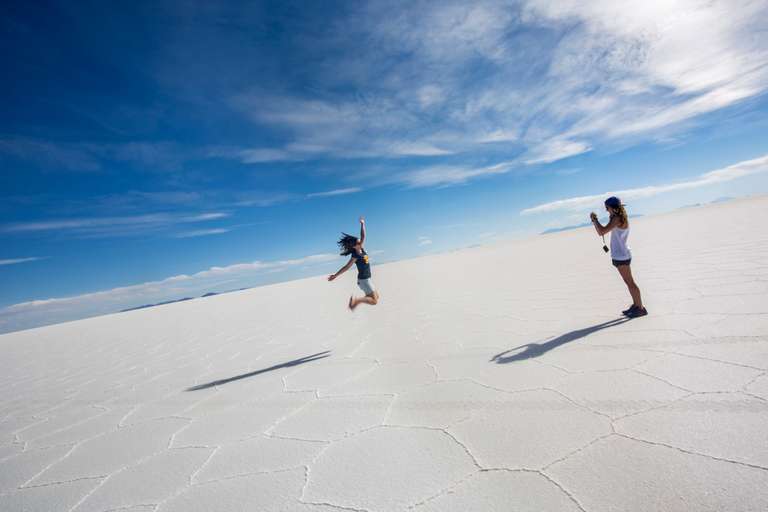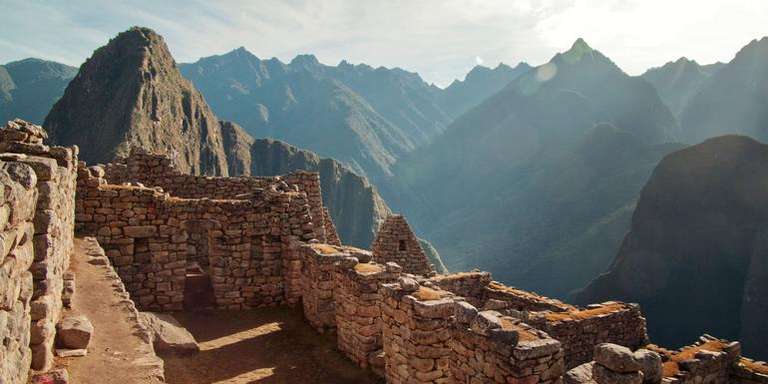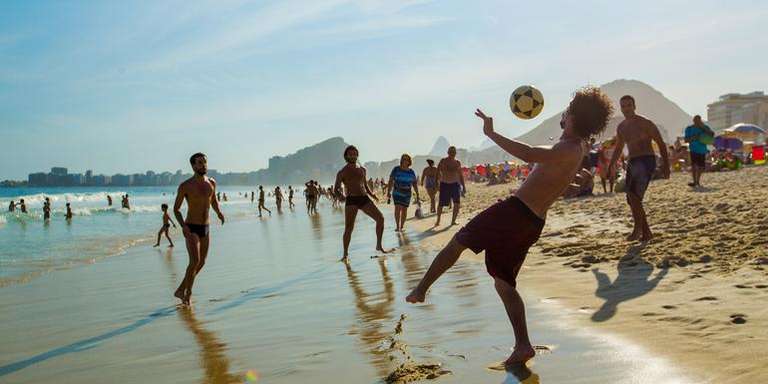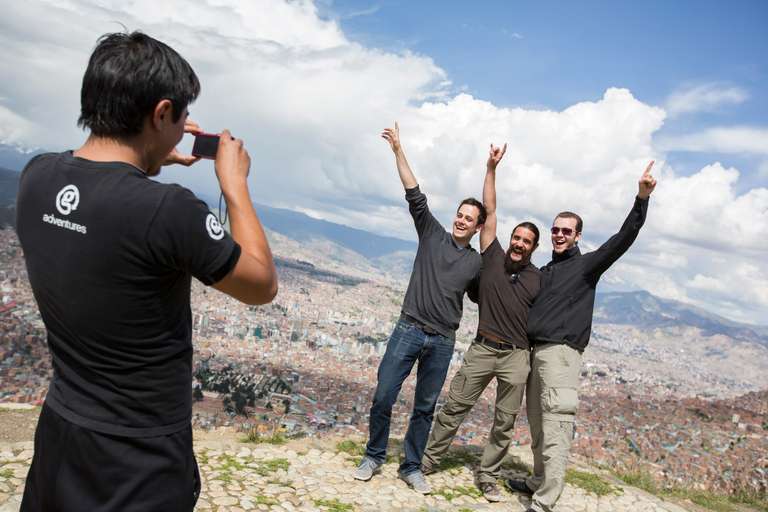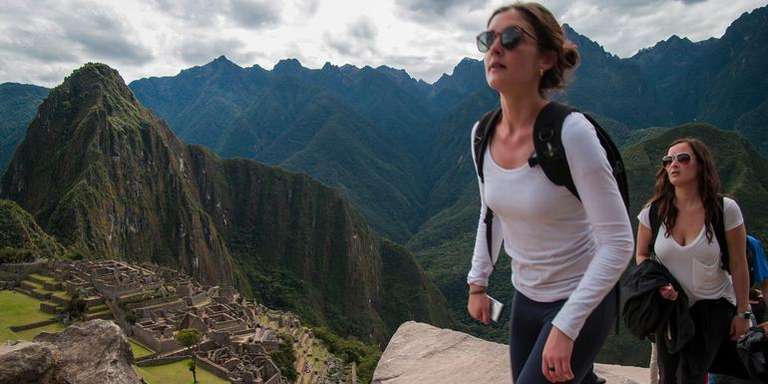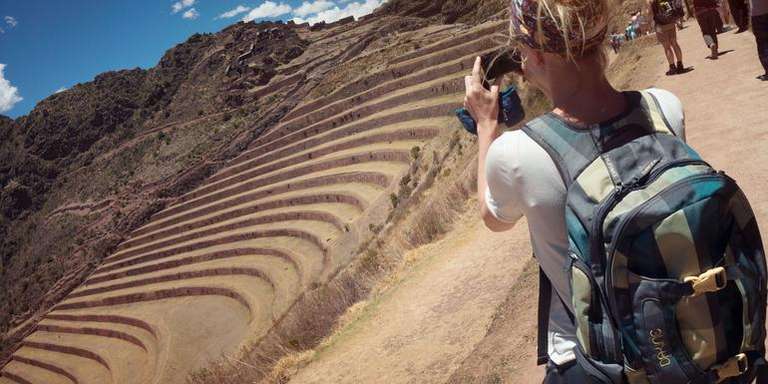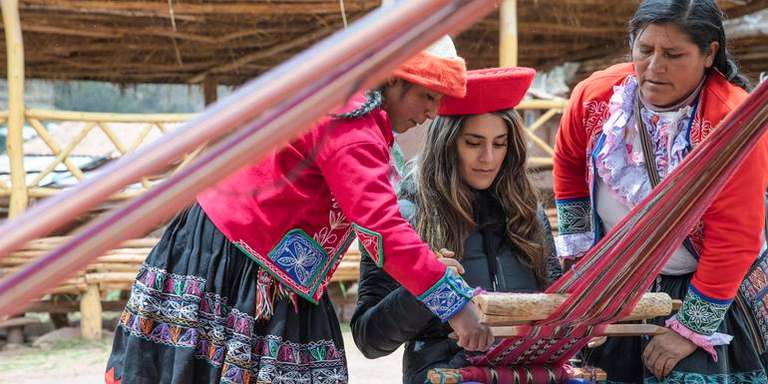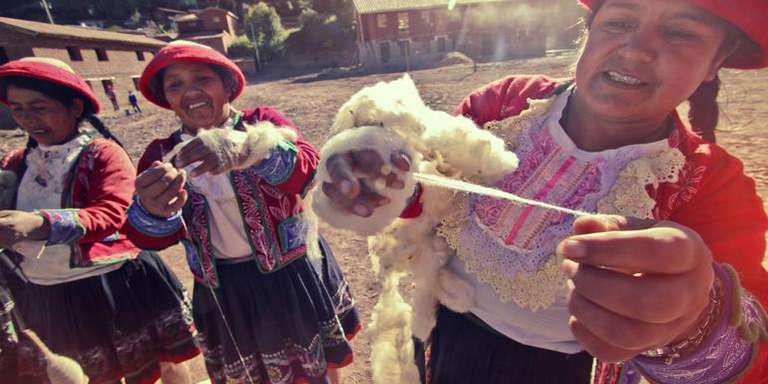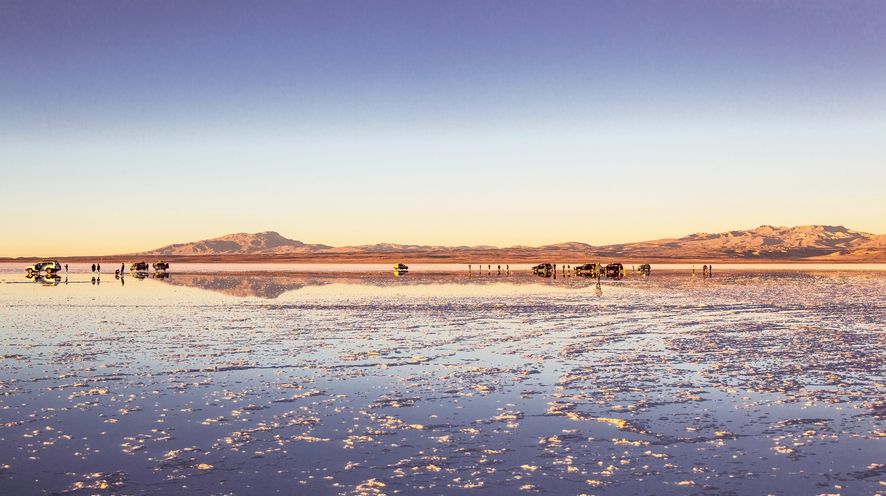Bolivia in February: Travel Tips, Weather and More
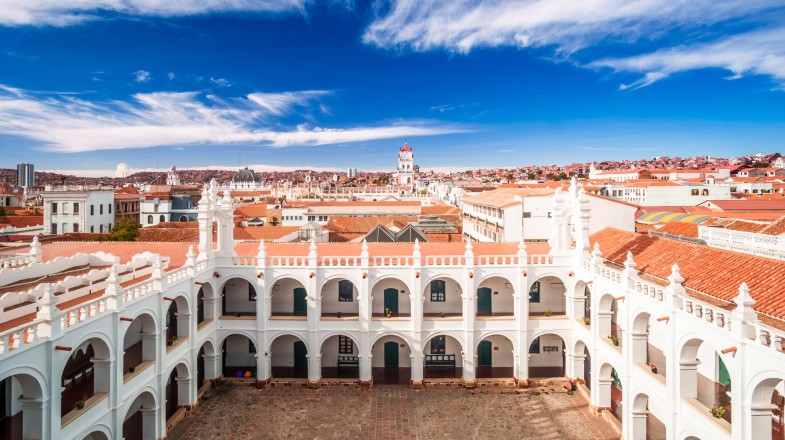
- Maire O
- From
- Maire O
- From
- Jacqueline M
- From
- Kimberly G
- From
Bolivia Weather in February

Witness the captivating February rain transform Bolivia's Salar de Uyuni into a mesmerizing mirror-like expanse.
The weather in Bolivia can be quite unpredictable in February. Like many countries in South America, Bolivia’s climate is distinctly dependent on its geography.
Temperatures range depending on the altitude and location. On your trip to Santa Cruz de la Sierra you will experience some of the highest monthly temperatures with an average maximum of 32° C, which can drop to 21° C at night. A trip to Copacabana, on the other hand, is more moderate with temperatures in February hovering around 15° C during the day and 5° C at night.
Precipitation-wise, there’s still a fair bit of rain around in February. In Cobija, it is particularly heavy with around 307 millimeters (12 inches) of rainfall spread across the month. Salar de Uyuni has a more moderate amount of rainfall with just 42 millimeters (1.7 inches).
For a month-wise weather overview, read our article on the best time to visit Bolivia.
Weather in Bolivia in February - Rainfall and Temperatures
Why Visit Bolivia in February


Despite the rain, there are many reasons why a trip to Bolivia in February is the perfect choice:
- Festivals and culture: February is awash with opportunities to experience authentic Bolivian culture, including one of the country’s most iconic and captivating festivals, the vibrant Carnaval de Oruro. The Virgen de la Copacabana festival is another notable event that features lively celebrations, colorful costumes, traditional dances, and delicious traditional dishes.
- Adventure: Although the majority of the tourist sites are out of bounds due to excess rain, you can still enjoy the adventurous riverboat tour along the Amazonian river or marvel at the spectacular waterfalls at the spate in Chorros de Jurina.
- Affordable prices: February is part of the low season in Bolivia, which means more affordable prices for travelers including accommodation rates, along with other travel-related activities.
- Peaceful atmosphere: With fewer crowds, visitors can appreciate Bolivia's attractions, museums, and natural wonders without the usual hustle and bustle.
Where to Go and What to Do

A trip to Bolivia in February wouldn’t be complete without visiting the mesmerizing Salar de Uyuni, the world’s largest salt flat. During the rainy season, the salt pan is covered in water, resembling a large natural mirror. You can experience stunning optical illusions as the light reflects on the surface. But it is important to note that too much rain can melt the salt and may make large parts of the salt flat inaccessible for tours.
February is also an exciting time to discover most of Bolivian culture. Check out the fascinating Carnaval de Oruro, featuring a vibrant procession called the "Entrada" where participants, dressed in elaborate costumes, perform traditional dances called Diablada, symbolizing the battle of good and evil. Virgen de la Copacabana festival is another notable celebration in February, with the Cholas and Waka Tokori dancers performing on the streets of Bolivia. The festival also presents an opportunity to explore Bolivia’s cultural folklore and authentic Bolivian cuisine.
What to Bring
As you prepare for your February trip to Bolivia, it's crucial to pack accordingly to accommodate the diverse weather conditions you may encounter. Here are some recommended items to bring along:
- Layered clothing: Pack lightweight and breathable clothes that can be layered for comfort during changing temperatures, including a warm jacket or sweater for cooler evenings.
- Rain jacket and waterproof gear: With the possibility of rain showers, a rain jacket or poncho is a must to keep you dry during outdoor excursions.
- Hats and bandanas: As the Bolivian streets light up with carnivals and festivals, hats, scarves, and bandanas are essential in keeping you safe from the sun and humidity of Bolivian weather in February.
Bolivia in February offers a captivating experience with its vibrant festivals, stunning landscapes, and diverse activities. Whether you're immersing yourself in the energetic Carnaval de Oruro or exploring the breathtaking Salar de Uyuni, this month provides unique opportunities for adventure and cultural immersion.
For a customized trip to Bolivia during February, connect with our travel experts who will design a tour tailored to your interests and preferences. Our article on how many days to spend in Bolivia will also come in handy before planning a trip to Bolivia in February.


